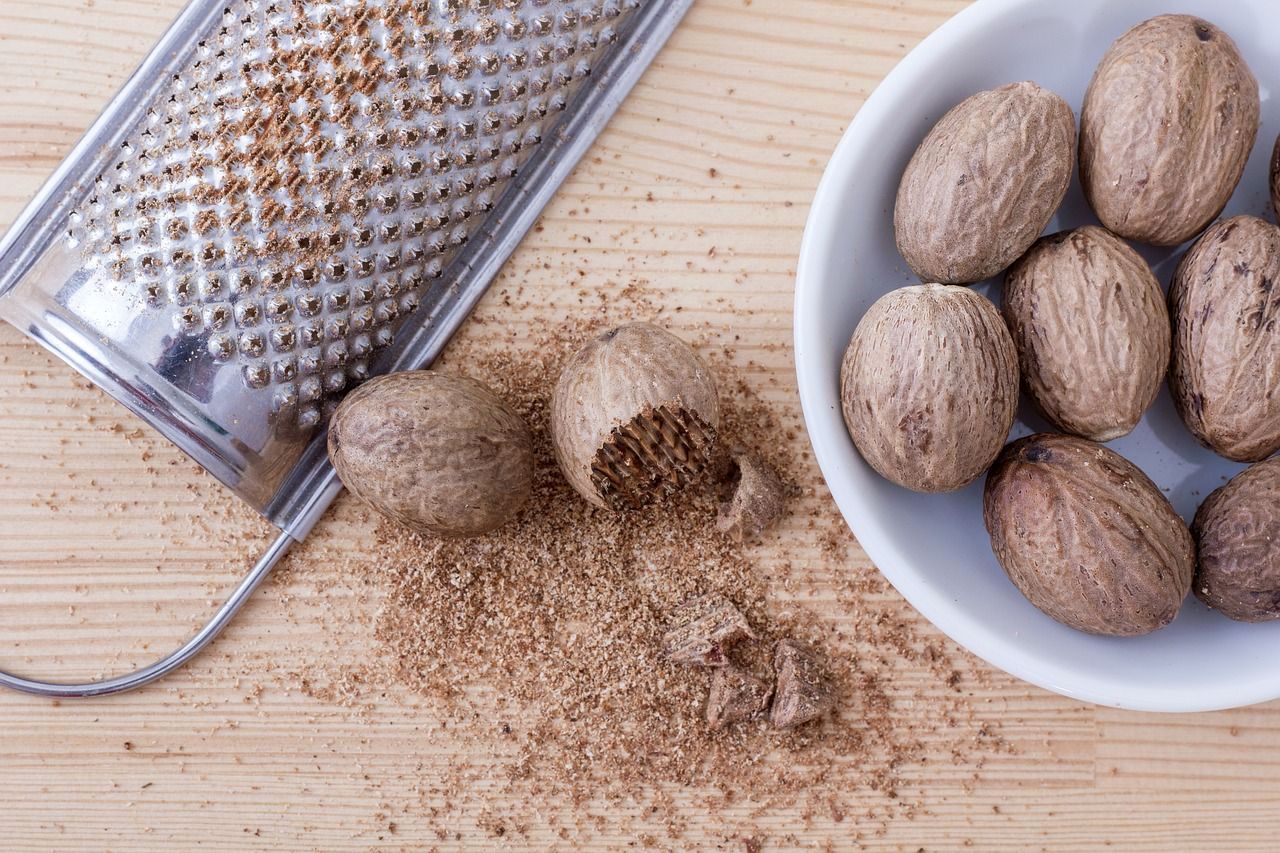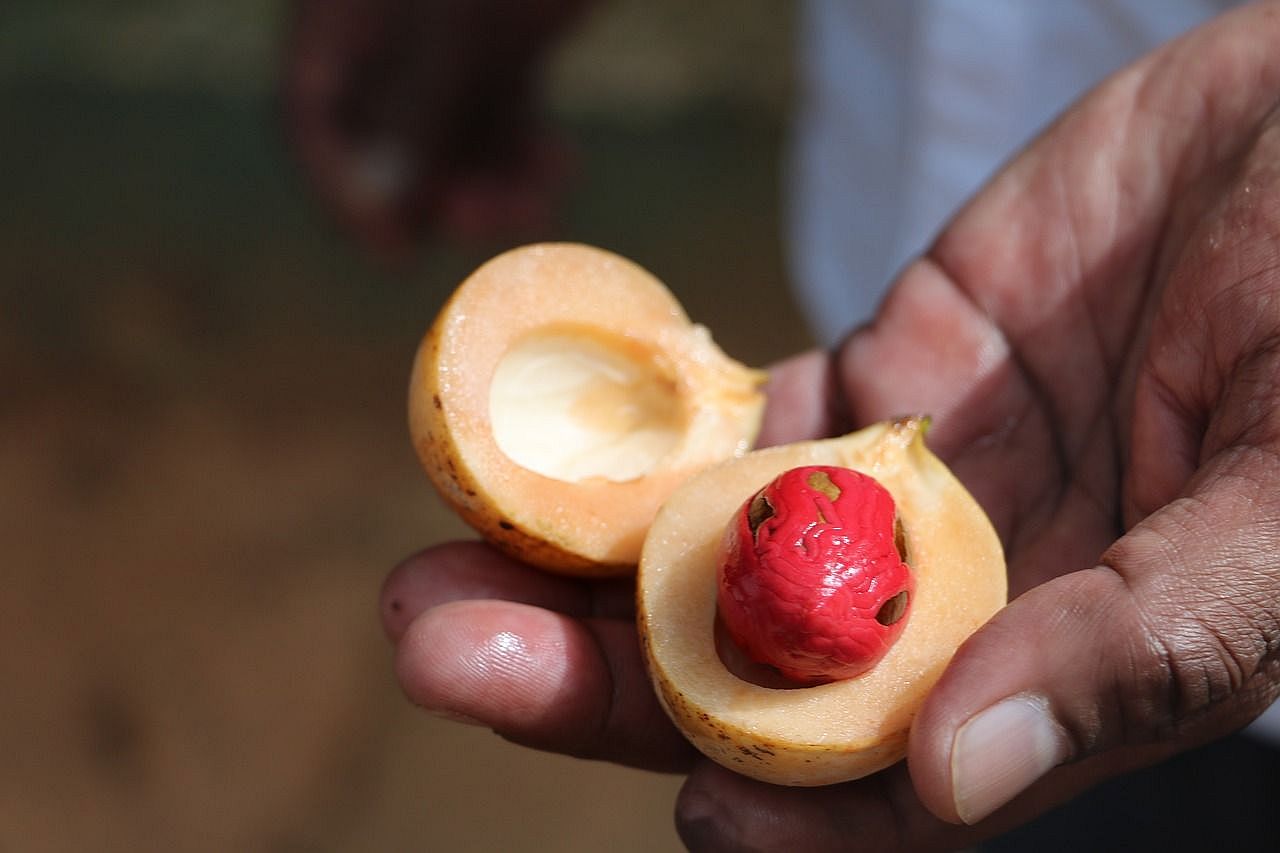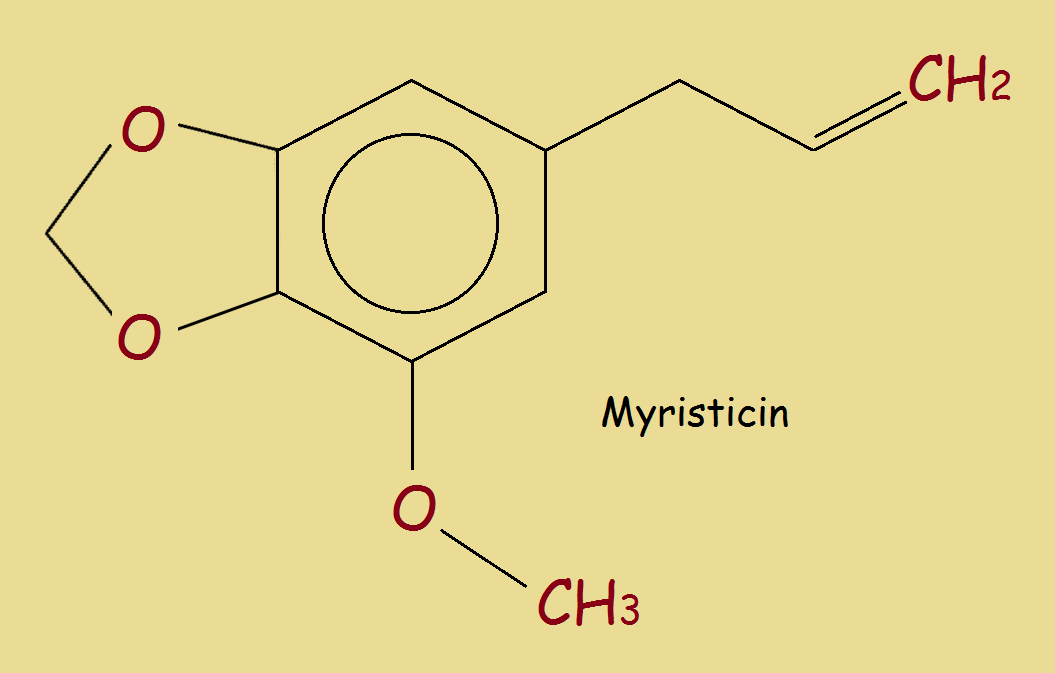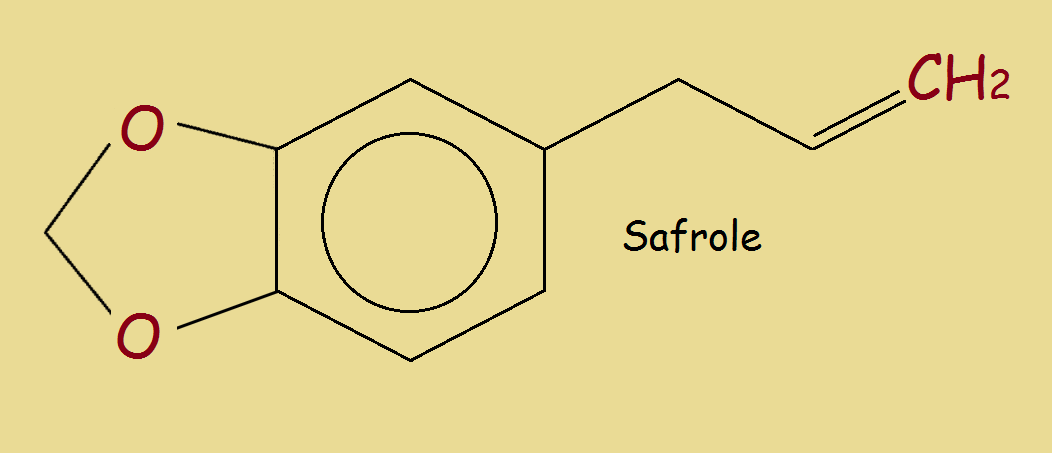
Once, at the grocery store with my wife, the checkout girl picked up a small green bundle and rang it up. She wondered what it was. We informed her, it was asparagus. It shocked the two of us that anyone could fail to know what asparagus was.
Introducing Nutmeg
As with asparagus, I wonder how many people don’t know what nutmeg is? Since it is used in sweets, perhaps only a small number. But how many people, if asked what nutmeg is, would say “It is a can of spice you buy at the store.”
The word nutmeg refers to a spice. But it also refers to the seed that is grated to produce the spice. Nutmeg grows on trees (Myristica fragrans). Originally, if you wanted nutmeg, you had to visit the Banda Islands, its sole location.
Did you know: more than nutmeg comes from a nutmeg tree…
Mace
There is also mace. Now maybe you knew where nutmeg comes from, but it’s an even chance you don’t know where mace comes from. Mace is the thin, almost web-like red layer that surrounds the nutmeg seed. It is dried and processed separately from nutmeg. It, too, can be found on your grocer’s shelves. It is used in pies and other sweets.

Both nutmeg and mace, used in foods as a spice make an entirely marvelous addition to the culinary world. But of course, some will misuse it. Are there chemicals within the nutmeg that can harm us if consumed in large excess?
Introducing Nutmeg: A Little Chemistry
Columbia University’s Go Ask Alice informs us, “Nutmeg’s psychotropic and hallucinogenic properties are believed to come from oils like myristicin…”

Notice the similarity between myristicin and safrole. Safrole is a component of sassafras oil. The difference is the lone methoxy group, (–OCH3).

These two compounds are included in a group of compounds called phenylpropenoids. These compounds may serve as natural insecticides.
There are a number of natural and fragrant substances included among the phenylpropenoids. One interesting example is the sweetbay magnolia, Magnolia virginiana.
Introducing Nutmeg: A Little History
So what was the original source of the nutmeg tree and its spices? And why is it of historical interest? You can be the judge of that. Enjoy this 3-minute long National Geographic video entitled: The Nutmeg Wars…
Note: You might also enjoy Vanilla and Vanillin: What’s the Difference?
References:
← Back to Food and Health
← Home

That video was fascinating! I love nutmeg but had no idea it was so limited in its location. I have a recipe somewhere that talks about adding nutmeg to minced beef as a means of calming people and helping them sleep. I can see from your article that this holds some truth. I have a couple of nutmeg seeds but I usually use the ground version. It’s very hard to grate.
Nutmeg is no longer limited to the Banda Islands, fortunately.
Always learn something new here!! I like nutmeg with eggnog and bourbon during the Holidays!!
I like it *anytime*!